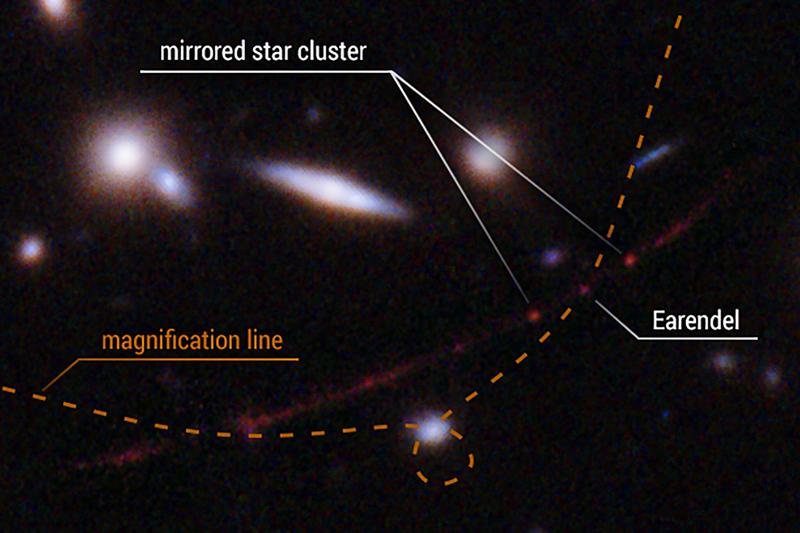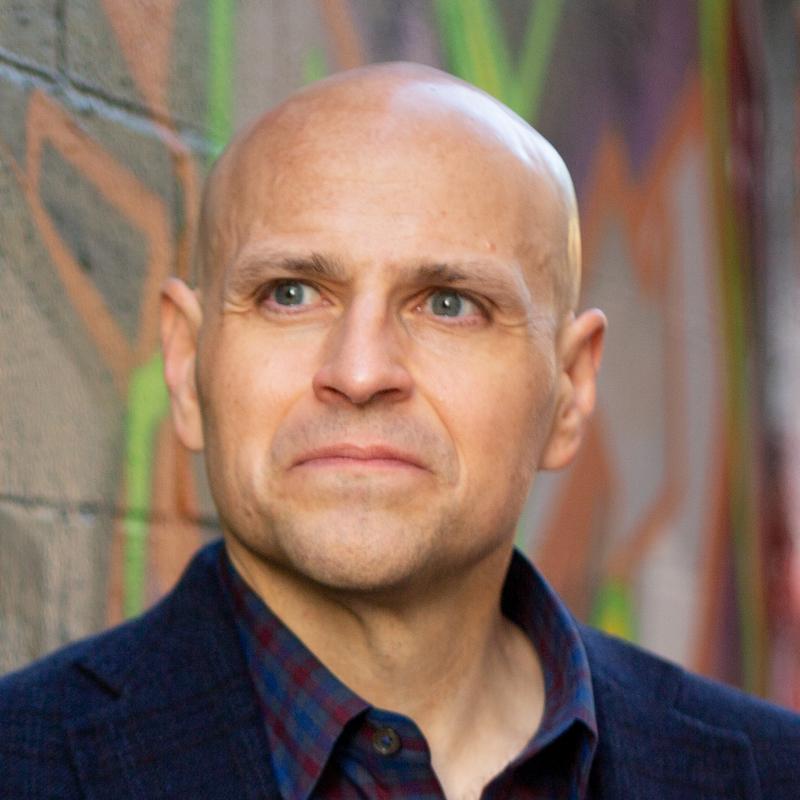![[Northern lights in the arctic]](/generated/img/newsletter/arctic-northern-lights-800-ccdc69a78.jpg)
The world of 2022 can be a dark place. A pandemic that has taken millions, the war in Ukraine, a global refugee crisis, withering assaults on democracy, and threats to the bodies and civil liberties of vulnerable populations. We can feel powerless against such demons, filled with anxiety and anguish. Amidst such dread, we cherish and savor the smallest moments of joy.
Such momentary relief just occurred when a photograph appeared on my newsfeed. Taken by the aged but faithful Hubble Space Telescope, it depicts Earendel, the oldest and farthest star ever detected by humanity:
The light from Earendel left some 12.9 billion years ago, a “mere” 900 million years after the Big Bang. It’s astonishing. Even more so when you appreciate that the brand new James Webb Telescope will peer back even further, some 13.7 billion years into the past.

Looking at the photograph and trying to comprehend those numbers, I’m filled with awe. In me, awe manifests as a profound blissful joy that slackens my jaw and sends shivers down my spine. But it makes me feel small and humble, so there is fear alongside the joy. Robert Plutchik placed awe at the intersection of fear and surprise in his famous wheel of emotions. Others categorize it under excitement. The complex, interleaved emotions behind awe are themselves awe-inspiring. Perhaps that’s to be expected from a word that is the root of both “awful” and “awesome.”
Psychologists Dacher Keltner and Jonathan Haidt characterize awe as two phenomena: “perceived vastness” and a “need for accommodation.”
“Perceived vastness” can come from observing something literally physically large—the Grand Canyon, for example—or from a more theoretical perceptual sense of vastness—such as being in the presence of someone with immense prestige or being presented with a complex idea like the theory of relativity. An experience evokes a “need for accommodation” when it violates our normal understanding of the world. When a stimulus exceeds our expectations in some way, it can provoke an attempt to change the mental structures that we use to understand the world.
In their studies of awe, Keltner and Haidt have found that the sensation is “elicited especially by nature, art, and impressive individuals or feats, including acts of great skill or virtue.” I mentioned in an earlier newsletter that connecting with awe can help “distance” ourselves from our inner critics or saboteurs. There’s even more evidence that awe has tangible benefits:
- Awe might improve your mood
- Awe might be good for your health
- Awe might help you think more critically
- Awe may decrease materialism
- Awe makes you feel smaller and more humble
- Awe may make you feel like you have more time
- Awe can make you more generous and productive
- Awe can make you feel more connected to other people and humanity
Read more in the whitepaper: The Science of Awe, by the Greater Good Science Center at UC Berkeley [PDF].
When I experience awe, I’m more present and attuned to the world around me and connected deeply to my values. (Although awe, closely related to wonder, is classically associated with religious and spiritual experiences, the emotion can also be entirely secular.) One of my most cherished awe-filled memories comes from a solo trip to Alaska to see the Northern Lights. After days of overcast skies and false alarms, I stood in an expansive snowy Fairbanks field in the middle of the night. I marveled at a three-hour display of pink, violet, and green aurora that filled the skies and illuminated my surroundings. Almost exactly four years later, just thinking of that moment reinvigorates me. (See photos below.)
Want more awe in your life? Go outside and experience nature. Look for someone who can inspire you. Maybe it’s an incredible athletic performance, an act of bravery, or a selfless deed. Listen to a beautiful piece of music. Spend time with a young child – children are filled with intense wonder and awe and can help us notice amazing things around us that our adult senses overlook. Appreciate something rudimentary: the bark of a tree, a bird, an insect, the clouds. Here are some more ideas.
Give yourself a goal of finding even one or two moments of awe each day. Like space telescopes, awe can help us see through the darkness and experience the light surrounding us.
Update January 2023: Keltner has just published an entire book based on his research: Awe: The New Science of Everyday Wonder and How It Can Transform Your Life.
